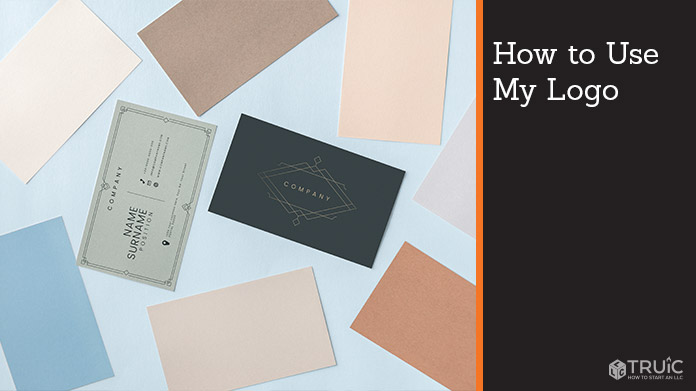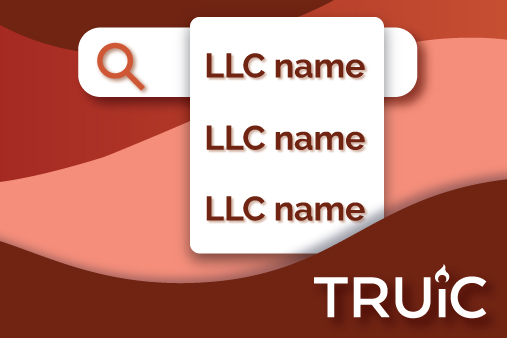How to Best use Your Logo
Once you’ve decided on a logo, the question quickly becomes how you should implement it into your overall marketing strategy. We’ll look at what a logo can do for your branding and how you can make the design stick. If you want to see how your logo looks before you decide how to implement it, check out our Free Logo Generator.

The Importance of Branding
At the most basic level, branding is any promotion of your company that distinguishes it from your competitors. New business owners definitely have their work cut out for them since they don’t have any brand recognition and knowing where to start can be challenging. To get a more in-depth look at branding, check out our Branding Basics: How to get Started guide.
Business owners almost have to assume that their first few marketing efforts are going to fall on deaf ears. Persistence is the key to building a reputation for your company.
Your logo plays a big part of it, and not just because it’s attention-grabbing. The symbol of your company should be getting at the deeper meaning of your company. Whether you stand for affordability, excellent customer service, or social justice, the logo is a wink to your target demographic that you’re on their side.
Where to Use Your Logo?
The short answer to this question is ‘everywhere’. But if you wanted a few more details than that, here are our top suggestions.
Webpages
When it comes to integrating your logo, experts recommend featuring it on every page of your site. This way, Google will index the images and make it more likely for people to see your artwork during a search as well as when they click on the site. From there, you can use it on social media pages and any other online advertisements you create (e.g., Pay-Per-Click, banner, etc.).
Tips for Website Placement
- Your logo should always be up at the top, but it’s up to you where to place it. Most people prefer it in the center as a way to announce the page, but don’t be afraid to shift it either left- or right-of-center and see how it looks.
- Instead of having the home page listed as ‘Home’ up at the top, try replacing it with your logo to really drive home your message.
- Consider placing your letterhead logo in the same space as your website logos. It creates a uniformity that customers will notice (if only on a subconscious level).
Business Cards
Business cards are a dime a dozen for many people, but there are ways that you can make yours stand out. Heavier cardstock, a professional design, and an inventive logo are just a few tips.
Marketers will tell you to make the logo the most prominent visual component on the card. If you’re having trouble coming up with the right business name, use our Business Name Generator for some good ideas.
You can also consider trying to work the logo in with the text of the business card. For example, if you have an arrow somewhere in the logo, try having it point to your website address or phone number. These little visual tricks can keep people’s eyes on the card for a second or two longer to better understand it.
Finally, include your business card in all correspondence. Throw in a couple with everything you send out just in case someone wants to pass it along to someone they know. Even if people toss it in the recycling bin, it’s a different medium that customers will have to remember you by.
Product Packaging
Anything that your company produces can be considered a product. Bags, plastic wrap, boxes: it can pay to customize your packaging. Even if you offer a service, you should look for ways to put your logo on items that you and your employees use.
No, you don’t have to order custom staplers with your logo, but any promotional items or uniforms that you have should bear the symbol. If you want to keep your branding simple and stripped down, you could even consider just placing your logo on the package instead of your full company name.
Emails
Consider including your logo in a custom signature for your email. The objective is to remind the recipient of your brand and reinforce the meaning behind the imagery.
Tools like MailChimp can give you a little more visual panache if you’re looking for a more aesthetically appealing layout. This strategy might give you more interesting ways to work in the logo, drawing the eye of the viewer in one direction or another.
Events
Industry events are a great place to meet people you can partner with to expand your brand. Whether it’s a direct competitor or an adjacent business, the opportunities are there for those who know where to look.
Not only should all your professional materials feature your logo, for both the sake of other industry professionals as well as prospective customers, but you might consider going the extra mile. For example, setting up a photo booth where people can have a little fun (and take home little strips that bear your logo).
If you’re at an outdoor conference or event, try hiring someone to chalk your logo on the sidewalk. Or have people wipe their feet off on a custom welcome mat. And if you’re using company vehicles to get around, your logo should be imprinted on the side. People on the road are primed to look around, which means you have the perfect advertising strategy built-in for every mile you or your employees drive.
Social Media
From home pages to individual tweets, you can incorporate your logo nearly anywhere on social media. If you want to learn more about how to set up your social media pages for success, check out our Social Media Guide for Small Businesses.
Remember that your logo is a symbol of your values on social media. If you’re weighing in a divisive topic, you send a message to your audience about what you stand for. Placing your logo on it is an endorsement of your brand values, which can help you draw in the audience you were looking for anyway.
Ideas to Incorporate Your Logo
Designers recommend experimenting a little with the size and format of your logo. If you’re hoping to scale your logo, you should use a vector format, such as EPS or SVG. This can make it easier to shrink down your logo to fit a Facebook post or blow it up to fit across a huge desktop monitor. You can also export a vector into a raster file, such as a PNG or JPG, if you want to maintain the image quality for things like email.
Or try experimenting with new ways to display your logo. For example, you might try breaking up the letters of your company to fit on T-shirts or product packaging while still keeping the same text and style of the logo. Or try cutting off part of your logo on an iPhone to leave a little mystery to your customers. The human brain wants to solve problems, and your logo is no exception.
The simple rule is to put your logo wherever you think people are going to see it. This repetitive quality might not instantly turn your brand into a household name, but it can go a long way to helping you establish yourself as a real presence in your industry.

